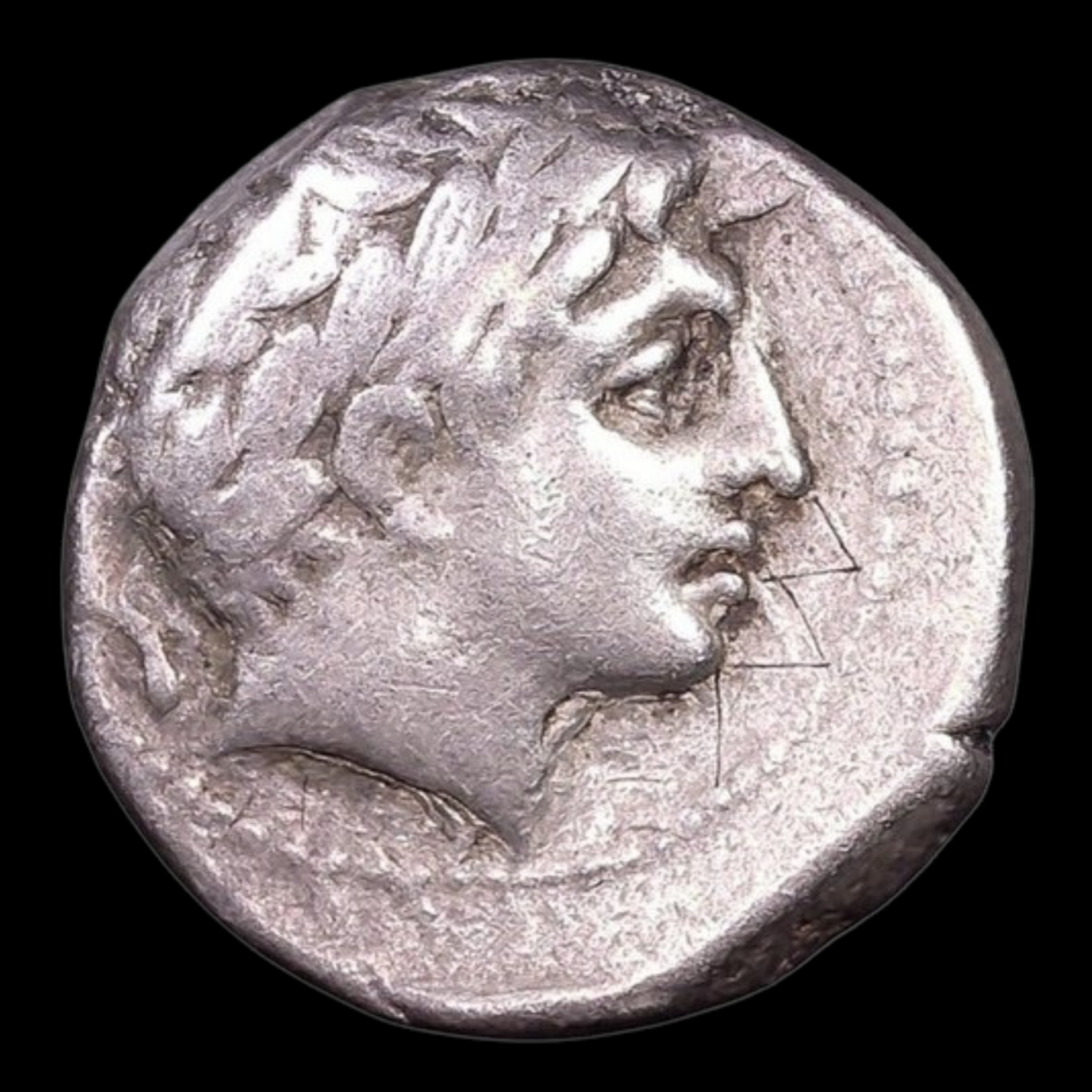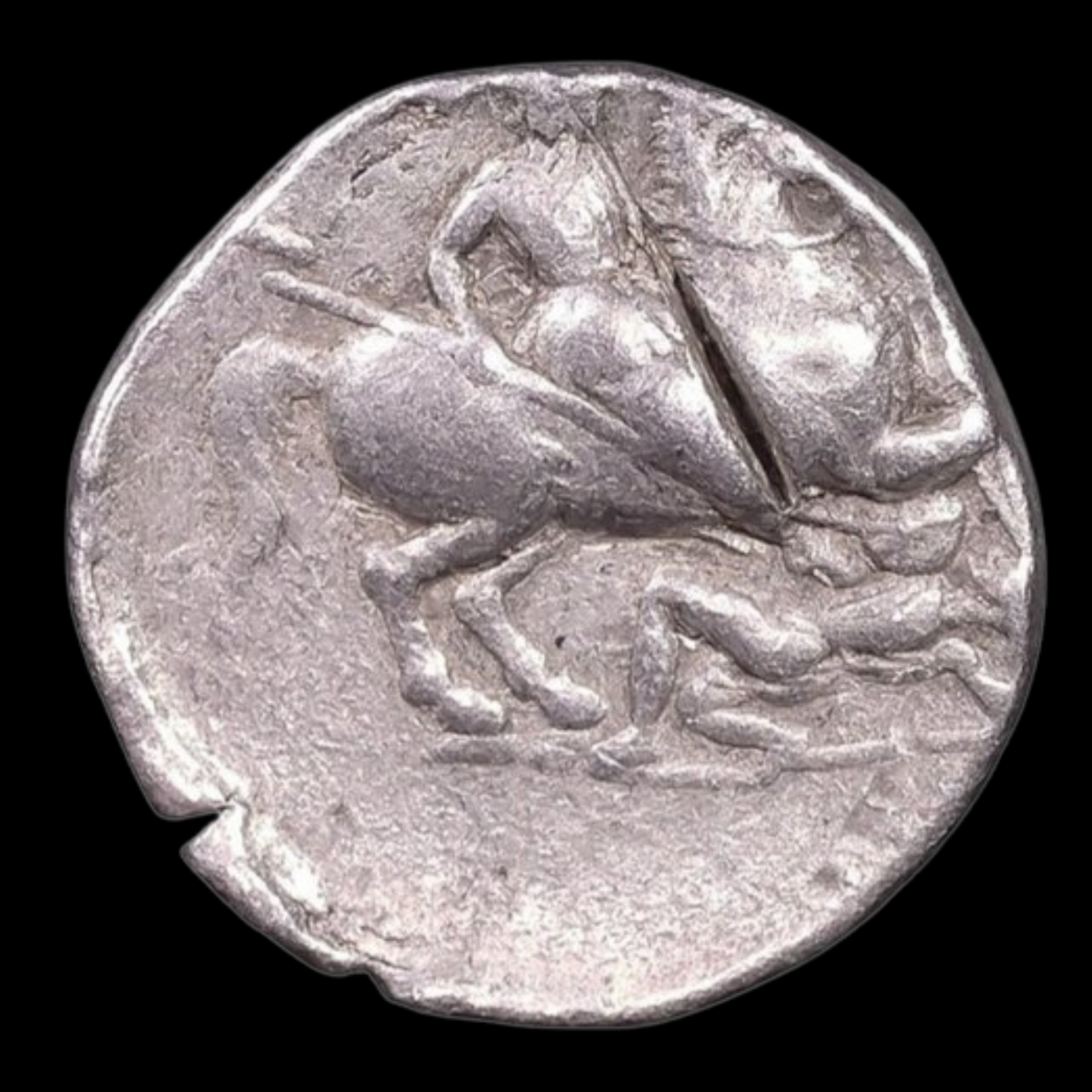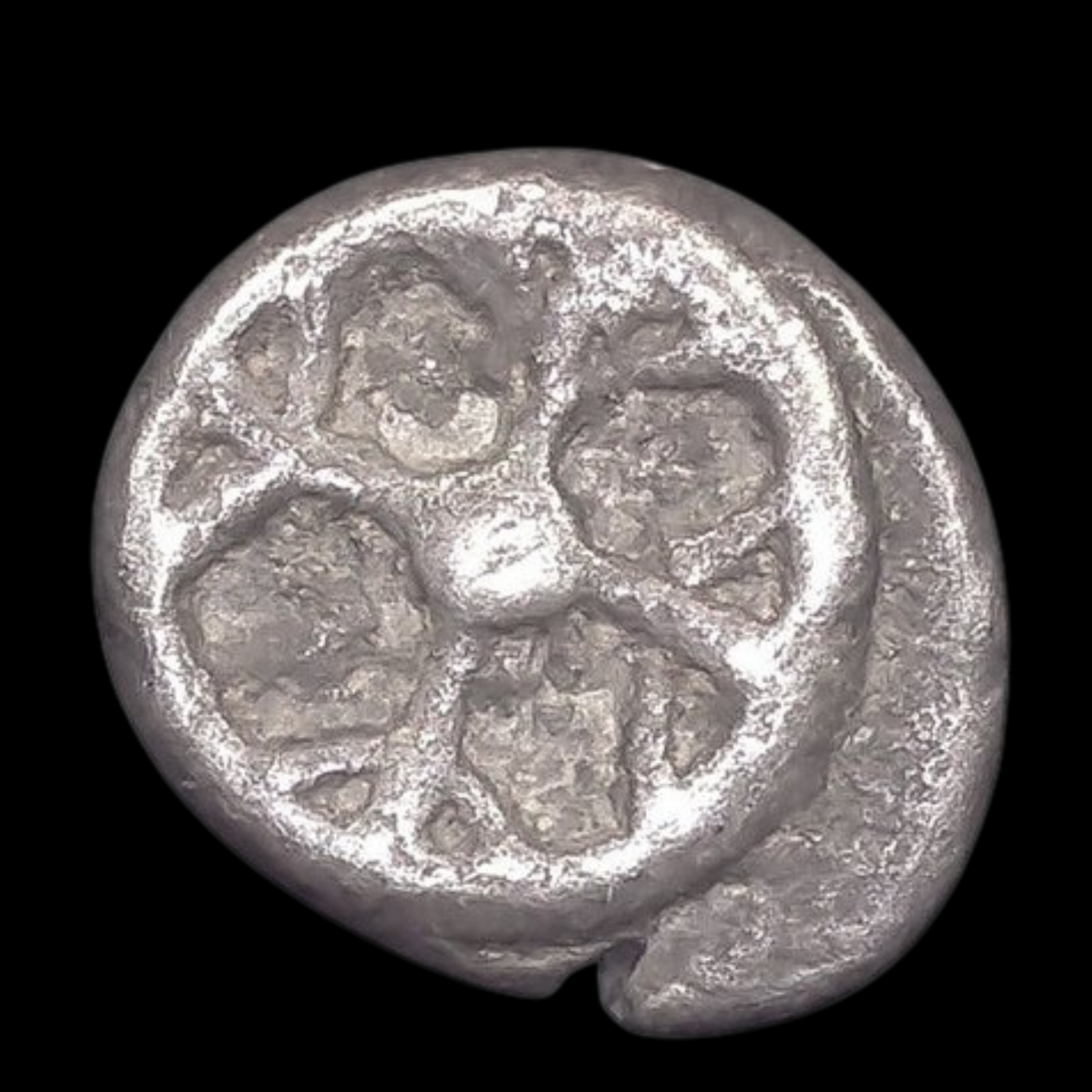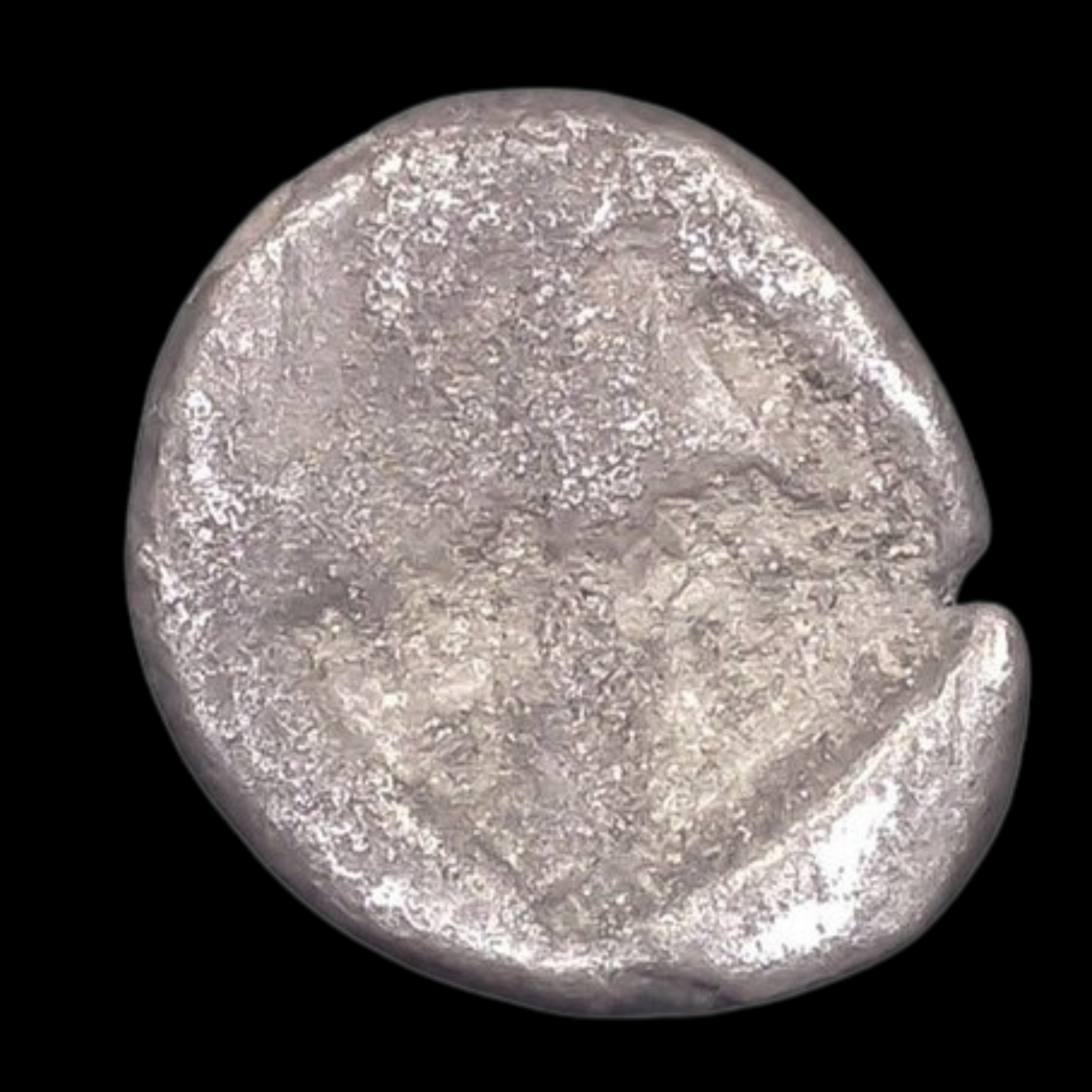 Image 1 of 2
Image 1 of 2

 Image 2 of 2
Image 2 of 2



Paeonian Silver Tetradrachm of King Patroas (about 2,340-2,365 years ago)
This silver coin is a tetradrachm issued by King Patroas, who ruled the ancient kingdom of Paeonia (located in what is now northern Macedonia and southern Kosovo) during the late 4th century BCE. As a substantial silver denomination, this coin represents the wealth and cultural influences of this lesser-known Balkan kingdom positioned between Macedonia and the tribal regions to the north.
Coin Description:
Front side: Laureate head of Apollo facing right, depicted with classical Greek artistic styling.
Back side: Dynamic scene of a mounted horseman riding right, spearing a fallen enemy, demonstrating both military prowess and artistic sophistication.
Technical Details:
Silver composition (likely high purity)
Denomination: Tetradrachm (a substantial silver coin worth four drachms)
Weight: 12.67 grams
Catalog reference: BM-4
Provenance: Ex Paeonia Hoard
Minted between approximately 340-315 BCE
Condition varies based on specific certification
Historical Significance: This coin was minted during a critical period when Paeonia maintained its independence despite pressure from its powerful neighbor, the Kingdom of Macedon under Philip II and later Alexander the Great. The Greek artistic influence visible in the design reflects cultural exchange with the Hellenic world, while the mounted warrior motif celebrates Paeonian cavalry traditions. Coming from a documented hoard discovery, this coin provides important archaeological context for understanding the economic networks and artistic influences in the northern Balkan region during the late Classical period, when Hellenistic influence was spreading beyond traditional Greek boundaries.
This silver coin is a tetradrachm issued by King Patroas, who ruled the ancient kingdom of Paeonia (located in what is now northern Macedonia and southern Kosovo) during the late 4th century BCE. As a substantial silver denomination, this coin represents the wealth and cultural influences of this lesser-known Balkan kingdom positioned between Macedonia and the tribal regions to the north.
Coin Description:
Front side: Laureate head of Apollo facing right, depicted with classical Greek artistic styling.
Back side: Dynamic scene of a mounted horseman riding right, spearing a fallen enemy, demonstrating both military prowess and artistic sophistication.
Technical Details:
Silver composition (likely high purity)
Denomination: Tetradrachm (a substantial silver coin worth four drachms)
Weight: 12.67 grams
Catalog reference: BM-4
Provenance: Ex Paeonia Hoard
Minted between approximately 340-315 BCE
Condition varies based on specific certification
Historical Significance: This coin was minted during a critical period when Paeonia maintained its independence despite pressure from its powerful neighbor, the Kingdom of Macedon under Philip II and later Alexander the Great. The Greek artistic influence visible in the design reflects cultural exchange with the Hellenic world, while the mounted warrior motif celebrates Paeonian cavalry traditions. Coming from a documented hoard discovery, this coin provides important archaeological context for understanding the economic networks and artistic influences in the northern Balkan region during the late Classical period, when Hellenistic influence was spreading beyond traditional Greek boundaries.











